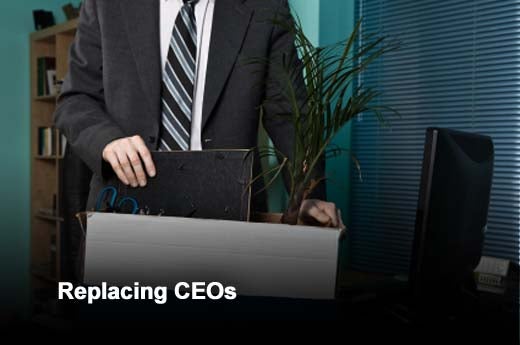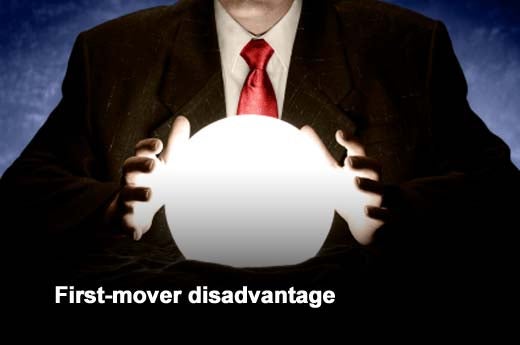The IT sector is at another turning point as mobile devices dampen the demand for PCs – just as PCs formerly dampened and then buried the demand for minicomputers. Simultaneously, the purchase of new on-premise servers and licensed software is being displaced by public cloud infrastructure and software services. Add cybersecurity as another question mark for the next decade. In sum, this transformation points to an era of “creative destruction,” in the phrase coined by the Austrian economist on entrepreneurship Joseph Schumpeter. As agile and often new firms will produce creative new solutions, slow-footed companies will be destroyed.
These two prospects will require special assessment: the new companies rising to these opportunities and the old companies threatened by impending change. What lessons can be learned from the histories of corporate rises and falls during equally ferocious transformations of the past?
Ernest von Simson, a senior partner of Ostriker von Simson, a consultancy that assists the largest worldwide enterprises in the selection and deployment of advanced technologies, and author of The Limits of Strategy: Lessons in Leadership from the Computer Industry, has identified five key lessons.
Click through for five lessons from the past that we can apply to the future of IT, as identified by Ernest von Simson, a senior partner of Ostriker von Simson and author of The Limits of Strategy: Lessons in Leadership from the Computer Industry.
Market leaders bear significant legacy burdens in navigating abrupt change in business models and technologies. Their perspective on new competitors can be deflected by their focus on traditional competitors. Digital Equipment, then the second largest computer company, missed the rise of California’s Sun and the other Unix firms because of management’s focus on the other Massachusetts minicomputer makers. The market leader’s cost structures can also block change. The minicomputer companies didn’t fail because of disruptive technology but because they couldn’t slash sales and R&D expenses to meet the new breed.
Great sales organizations present another barrier. Often the crown jewels of successful companies, they too often try to block change in products or distribution models – for example, the sales organizations’ efforts to block new storage modes at IBM in the 1950s, the unification of processor architectures at Digital Equipment in the 1980s, or the continuation of Sun’s proprietary hardware in the 1990s. Finally, strong cultures can be straitjackets. IBM didn’t fail in PC software because of Bill Gates’ negotiating skills or Microsoft’s brilliant programmers, but because the PC market was driven by consumers, as IBM recognized later when it sold the business to Lenovo. “Prior success handicaps change,” as a McKinsey thought leader pronounced. “More companies fail because of strong cultures than weak strategies.”
For the leadership of new companies, the critical success factors include first, a deep knowledge of the market, typically founded on first-hand experience with that sector. Second, a clear appreciation of the technology’s current reality and future trajectory. Third, sound judgment about people. And finally, “steadfastness” – the CEO’s ability to hold the direction he or she has selected even while pundits, customers, and especially direct lieutenants say he’s wrong.
Tom Watson, Jr. introduced tape storage over the objections of top sales executives, who feared erosion of the hugely profitable punch-card business. An Wang drove his company’s transitional leap from prior success in desktop calculators to far greater success in office computers – again over the disagreement of his vice president of sales. Lou Gerstner ignored the advice of press and pundits to break up IBM and jettison the mainframe, which remains profitable to the present time. Scott McNealy overrode his field representatives’ pleas to become a reseller of Microsoft/Intel products.
Replacing a CEO is the board of directors’ most important and most conflicted responsibility. For mature companies, replacement often comes too late – sometimes delayed because directors have become captive to their board positions and/or a charismatic CEO. Wait too long and the company may go into a downdraft, causing a powerful CEO to insist on more time to right the business in order to preserve his or her reputation. But undue delay greatly increases the chance of a slipshod choice that will itself require rectification.
For start-ups, replacement of a founder/CEO often comes too early. Venture capitalists routinely oust the founders of fledgling companies as soon as the employee count crosses some arbitrary number like 100 or 1000. But that abstraction ignores the countervailing truth: the most successful IT companies, with the greatest return to shareholders, were built by their founders: Steve Jobs at Apple, Jeff Bezos at Amazon, Larry Ellison at Oracle, Bill Gates at Microsoft, and Larry Page and Sergey Brin at Google. In many cases, the young founders were given early support by more experienced chairpersons or coaches, notably Mike Markkula from Intel at Apple, and Eric Schmidt from Sun and Novell at Google. But in both cases, ultimately, the founders carried the day.
CEO replacement is akin to brain surgery. Frequently it’s necessary and often delayed. And there’s a high rate of patient or company fatality.
To achieve sustainable strategic advantage, a new technology wave should represent a radical shift in both underlying technology and business model. The PC sector filled the bill and created substantial wealth for a few hardware leaders and dozens of software suppliers starting with Microsoft. The minicomputer sector did not, and its demise over ten years would be accompanied by major losses for the software firms that hitched their futures to quickly fading stars like Data General, Datapoint, Digital Equipment, Prime Computer, Wang Labs, and two dozen more.
What made the difference? Minicomputers were simply low-end versions of the mainframe, with cheaper circuit technology but proprietary circuit designs, operating systems, and distribution models. Conversely, personal computers were built on a “layered” approach, in which each manufacturer shared processors (typically Intel), operating systems (typically Microsoft), and even basic applications like databases, spreadsheets or word processing. Common components made two huge differences: lower costs and a much higher volume of users with essentially the same systems. The rising volume of users attracted even more software applications, which attracted even more users; and so it went. Minicomputers simply couldn’t compete, and every one of them failed along with then-major software firms like Cullinet (once the industry’s largest). The two notable exceptions were IBM and Hewlett Packard, both large enough for their minicomputers to attract a viable collection of independent software applications and, not coincidentally, both with sizable investments in personal computers.
The first entrants into a new market created by a disruptive technology will establish an unassailable competitive advantage and reap the lion’s share of benefits in terms of customers, markets, and profits. At least that’s the theory. Take the early bank ATMs, for example, or the recently introduced smartphone bank apps for categorizing small business expenses or remotely depositing checks through photography. Ultimately, other banks caught up, but the first movers held an advantage, as NationsBank’s former CEO Hugh McColl once observed astutely to von Simson, “IT innovation can help you gain market share, and customer inertia helps you keep it,” even when the technology becomes commonplace.
But that’s only half the story. First movers often enter the market before it’s been definitively reshaped by the disruptive technology. Too often they try to mold new technology around old business models, with disastrous results. Consider the three PC leaders of 1980: Apple built its computer image as a consumer product and was held to a five percent market share until the iPhone made its debut. Commodore molded its product line around a high-end calculator with a $600 price and an unacceptably low level of help desk support. Tandy modeled its product strategy on the old minicomputer business model with an integrated line of processors, Tandy-developed applications, and its own Radio Shack stores for distribution and support. None of the three could succeed against the layered models of Intel processors and Microsoft operating system atop multiple applications and distribution channels. The volume of companies adhering to the Wintel model swamped everyone else. More recently, there’s the example of the big three – Amazon, Facebook, and Google – all capsizing forerunners like Friendster, MySpace, AltaVista, and dozens of others.
Waves of change roll through the information technology sector roughly every 15 years or so. Each wave floats a few agile start-ups and sinks legacy-burdened incumbents. History never exactly repeats itself but many phenomena reappear. It’s these that are worth observing for old and new companies alike. And for sectors outside IT, the waves may come less frequently but no less destructively. So think of the IT experience as a wind tunnel through which other businesses can pretest their survivability.









